Putting Climate Change in WaSH: Impacts and Measures Taken
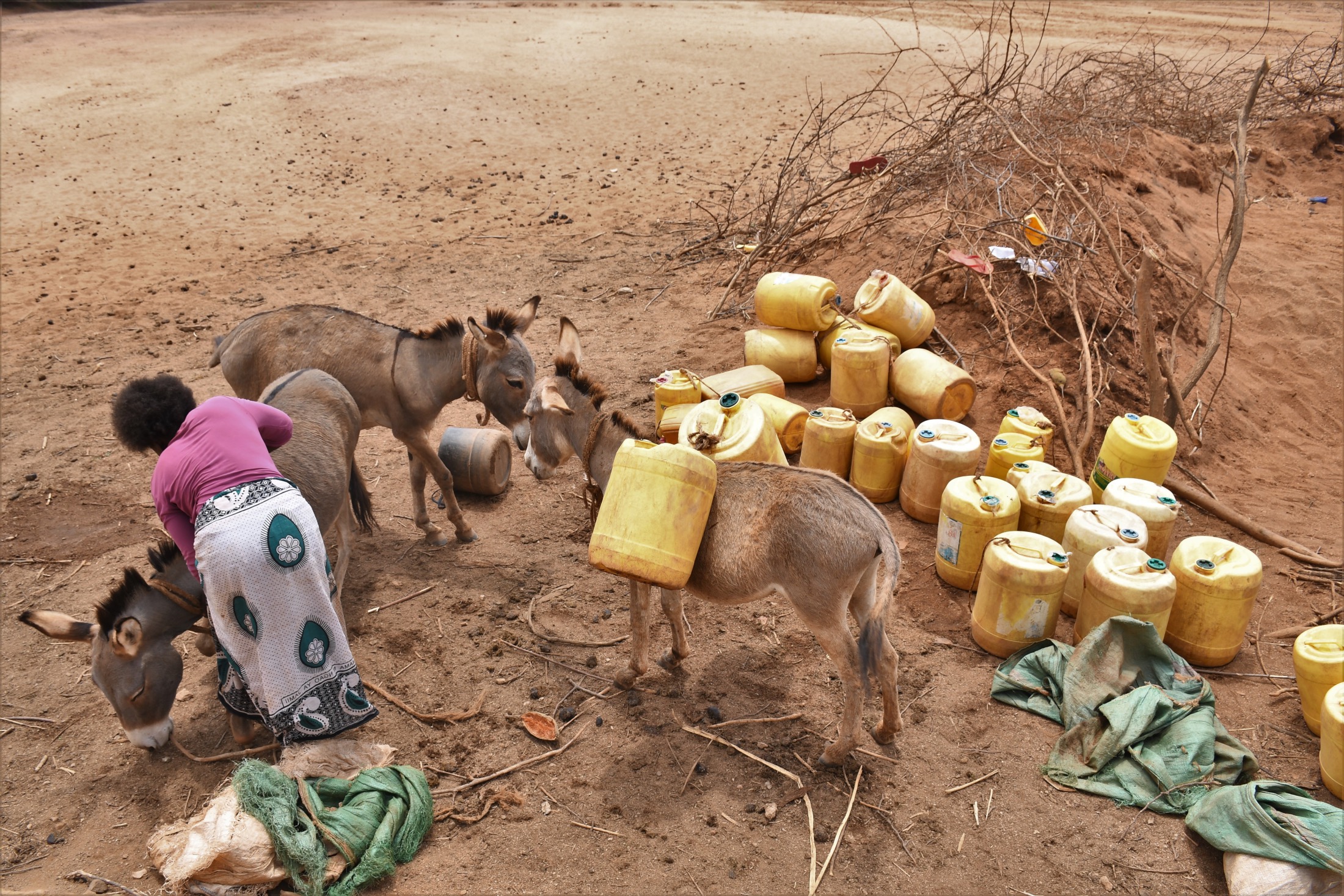
A woman collects water from a scoop hole in Southeast Kenya. In this semi-arid region, women often walk more than 2 hours each way to get water.
By Harnoor Kaur, Monitoring, Evaluation, Resolution & Learning Associate at The Water Project
As the United Nations, Climate Change Conference (COP 26) in Glasgow concludes, water and sanitation deserve to be at the forefront of the climate agenda. Climate change impacts are widespread, rapid, and intensifying – and nowhere is this more evident than in relation to water, sanitation, and hygiene (WaSH).
The increase in global temperatures, changes in precipitation patterns, sea-level rise and frequent extreme weather events threaten to undo the gains made since 2015 in achieving the United Nations Sustainable Development Goal 6 – Clean Water and Sanitation. For instance, climate change can increase the population living in extremely high water stress areas from four to five billion in 2050. That is one more person every two seconds. If timely climate action is not taken, more people will not access clean water and sanitation.
These challenges call for necessary climate adaptation and mitigation strategies to guarantee sustainable water and sanitation for all. The Water Project (TWP) has embraced measures such as evidence-based decision-making and climate-resilient infrastructure to secure access to safe and reliable water and improved sanitation and hygiene. Ensuring access to reliable WaSH services is a critical mitigation strategy in our fight against climate change.
Local Climate Change Impacts
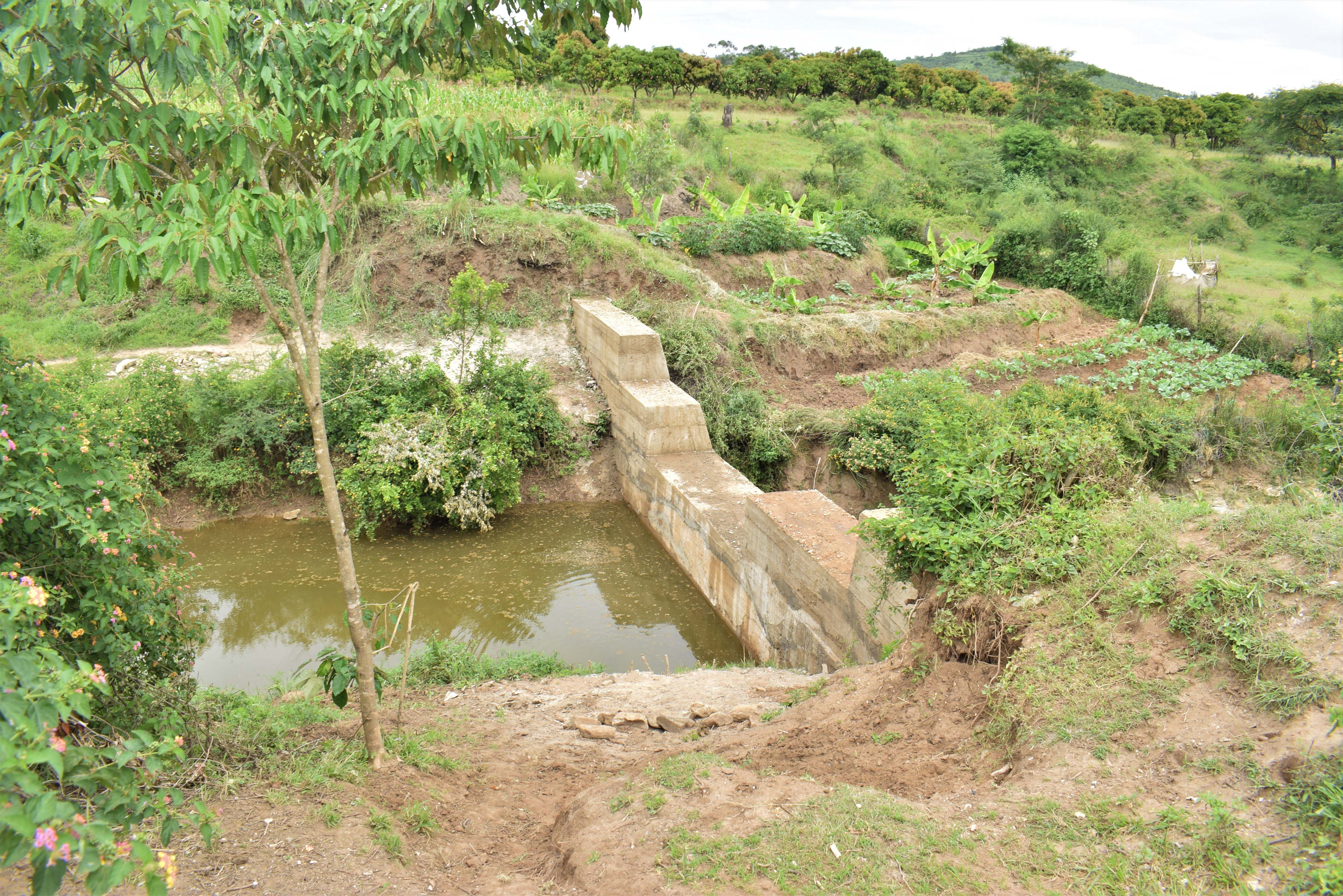
Water begins to collect behind a newly constructed sand dam. It will fill with sand in a few rainy seasons that will hold water throughout the dry seasons.
The climate crisis is often discussed in terms of carbon emissions. They are crucial to our conversation because carbon emissions are the most significant greenhouse gas emissions leading to global warming, and ultimately, climate change. Africa accounts for less than 4% of the world’s total carbon emissions, but it is disproportionately vulnerable to the impacts of the changing climate. Our partner countries – Kenya, Uganda, & Sierra Leone – are already witnessing seawater intrusion, heavy rainfall, floods, heatwaves, and droughts, each of which will negatively affect water availability, affordability, access, and quality.
Climate change inhibits people’s access to safe water and sanitation. For instance, in Kenya, droughts have a significant effect on the availability of safe water. They cause water scarcity, so people are more likely to use unsafe water sources nearby or travel long distances.
And floods come with problems too. They can damage ‘improved’ infrastructure such as boreholes, protected springs, and hand-dug wells, and set the progress back.
Simultaneously, a higher incidence of extreme weather events poses additional stress on water quality by affecting water supplies, storage facilities, and waste disposal systems in rural settings. Floods increase the spread of fecal-oral contaminants because floodwaters flush pathogens and pollutants into water supplies from flooded ditches used for open defecation.
Climate variability is also likely to widen present inequalities and create new vulnerabilities for women and girls. It is estimated that women in many countries walk for an average of 4 miles each day to collect water. The Water Project has observed this first hand in Southeast Kenya, where women spend two hours each way to fetch water. Some women have reported waking up as early as 3:00 AM to travel to bring water, so they are home in time to make breakfast before their children go to school.
When water resources are scarce or contaminated, women spend a significant amount of time hauling water from distant, presumably ‘safer’ sources for their families. However, the water from distant sources – scoop holes and reservoirs – is rarely enough to meet the household’s needs and is often contaminated.
For women, the costs of collecting water are high. It considerably shortens the time they have available for education, work, leisure activities, and care-taking.
Last but not least, as the world rallies against the COVID-19 pandemic, millions are already at risk of another public health disaster. Climate-change-induced rainfall variability can increase the likelihood of water-borne (typhoid, cholera, and dysentery) and vector-borne (malaria and dengue) diseases, the leading cause of child mortality and morbidity in Africa. Erratic rainfalls compel people to prioritize water for cleaning and drinking purposes and neglect hygiene activities such as handwashing after defecation.
Building Resilient Water Sanitation and Hygiene Services
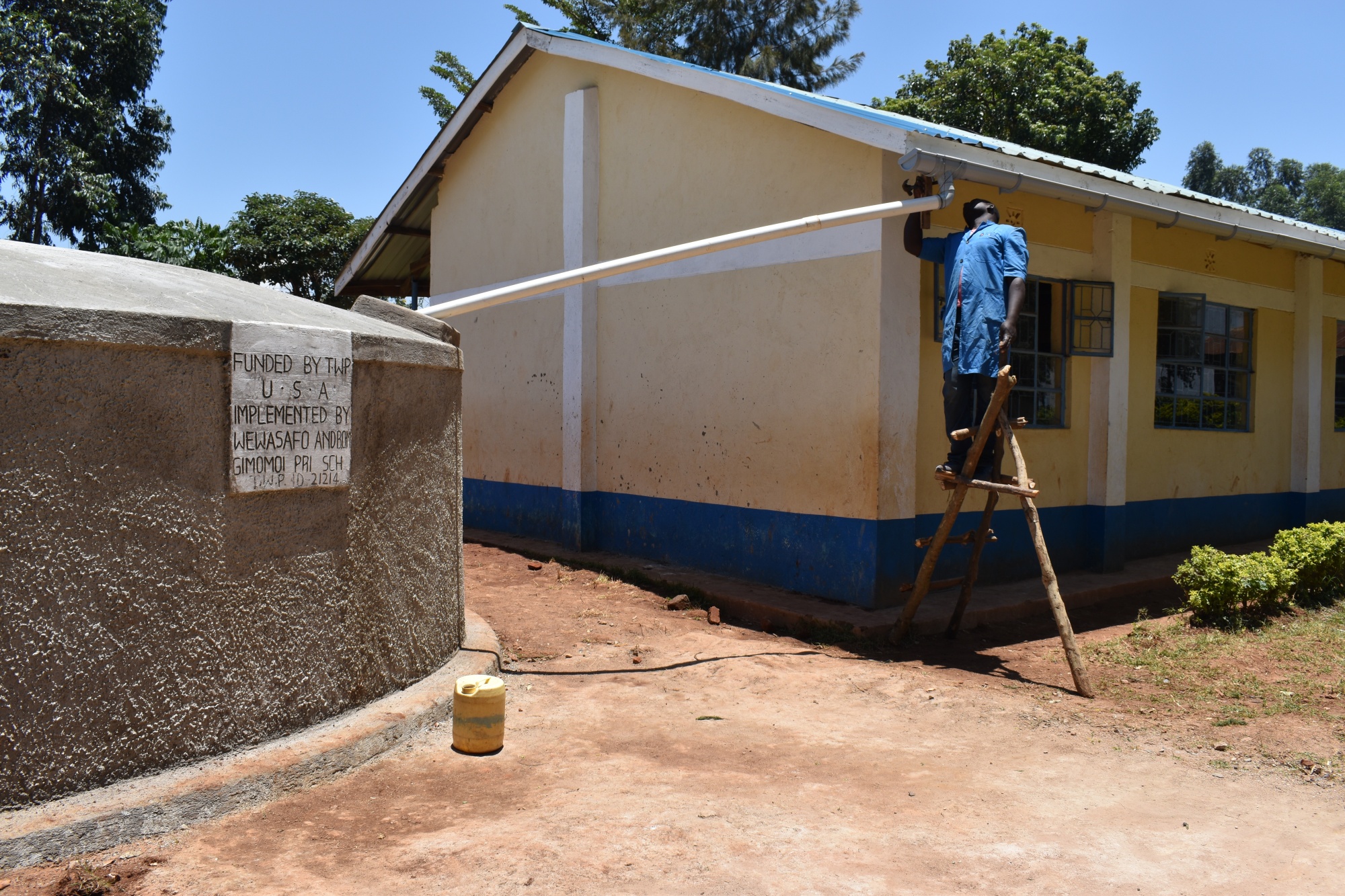
Installing gutters at a school that will allow rainwater collected from the rooftop to fill the adjacent tank. The tank will provide water to the students throughout the year.
While climate change threatens clean and safe water, sanitation, and hygiene, it also offers an opportunity to rethink our approach to sustainable outcomes. The Water Project builds climate-resilient interventions at the local level to partner with communities preparing for the effects of climate change. By offering communities the tools and training they need, we ensure that no one is left behind.
Climate-proofing water infrastructure isn’t just about pouring concrete into the ground. TWP ensures sustainable water supply and quality in Africa by adopting nature-based solutions such as sand dams and rainwater tanks. These cost-effective interventions reduce users’ exposure to climate risks by providing a reliable, local, and improved source.
To mitigate climate change risk, we monitor our water points quarterly, learn from the data, and respond by making iterations to our programming regularly.
For example, The Water Project uses rainwater tank sensors that remotely monitor rain inflows, rainwater usage, and storage volumes in Western Kenya. The 32 Mobiwater smart tank levels sensors help TWP understand the relationship between climate variability and rainwater tank functionality.
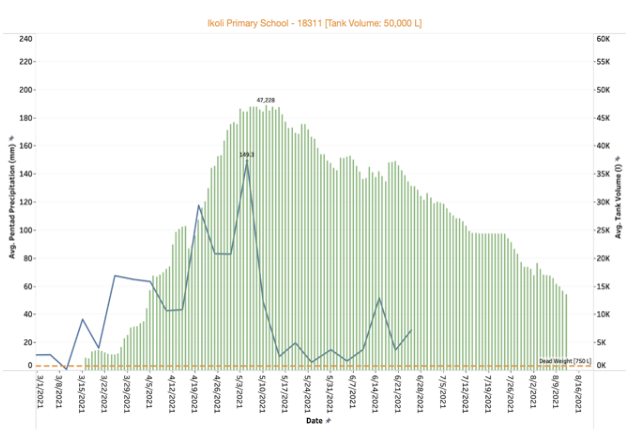
The graph portrays rainwater tank storage volume using the data collected from MobiWater sensors at one of our schools in Western Kenya for March-August 2021.
One of the keys to effective rainwater tank use is knowing how much water is in the tank, when, and how the water is being used. The schools will soon have access to this data to promote better water management during dry periods. By getting this data in the hands of key stakeholders, we are helping them plan under uncertainty (erratic rainfall patterns) and evaluate how rainwater storage can best contribute to reliable and sustainable water access.
With projected increases in frequency, severity, and duration of extreme weather events, it logically follows that the need to manage water quality impacts has to increase in accordance with climate change. The Water Project monitors water quality bi-annually (rainy and dry season) to track the effects of seasonality on water points. Each water point is tested for physical (temperature, color, smell, and turbidity), microbiological (bacteria and viruses), and, where geographically appropriate, chemical quality (fluoride and nitrate). It allows our teams to evaluate changes in water quality risks, communicate with our partners on potential threats, and develop better mitigation strategies for the future.
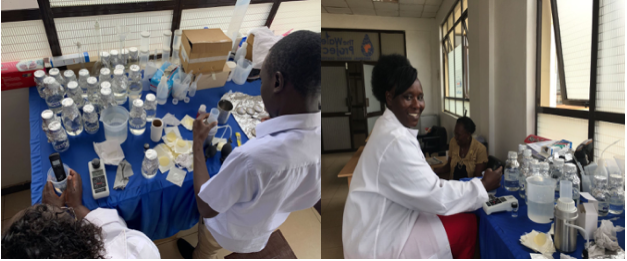
Western Kenya Regional Service Hub’s water quality technicians conduct water quality tests on collected samples in their lab.
The best defense against the changing climate is building robust systems backed by high-quality infrastructure and evidence-based decision-making. The principles that are core to our identity: bringing stakeholders together, providing reliable access to clean drinking water, empowering water users, and learning from the data we collect will be more crucial now than ever before as we extend and strengthen our services in the face of this unprecedented threat.
Home More Like ThisTweet